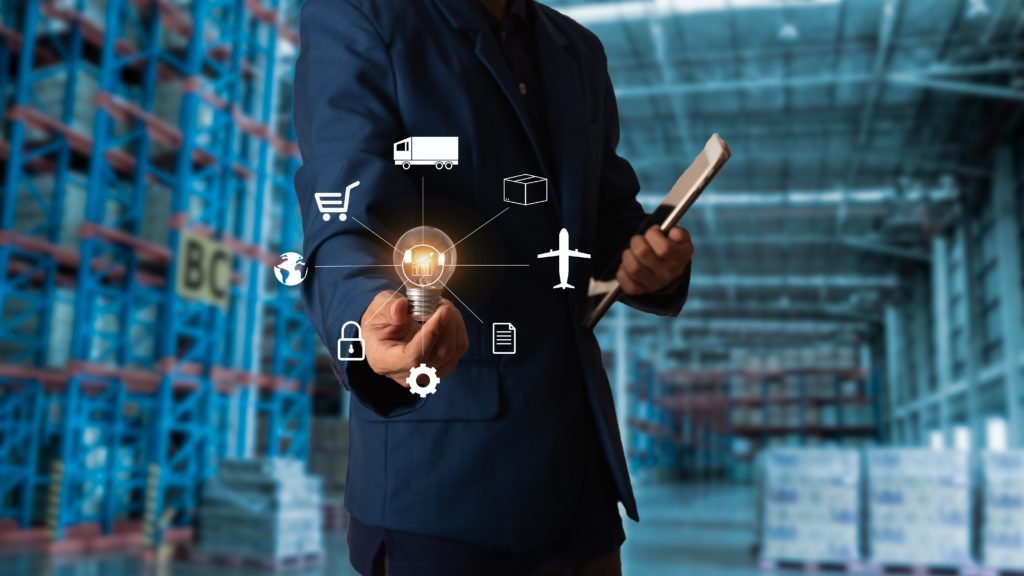The global logistics market is growing day by day. Companies all over the world are facing limitations such as waste and energy. Now is the time to change by switching to reverse logistics. Supply chain professionals can use reverse logistics strategies to maintain the smooth running of processes.
We will learn the basics of reverse logistics, the types, the stages involved and its benefits in this blog. We will also cover circular supply chains including their importance for recycling waste products. A knowledge of these can help you to gain a strong foothold towards a career in supply chain management.
What Is Reverse Logistics?
Reverse logistics is a variety of supply chain management. The products are moved back from the customers back to the manufacturers or sellers. This method begins at the customer end and gradually moves backward along the supply chain. It goes to the distributor and then to the manufacturer.
This supply chain management might consist of methods in which the customer can decide on the final disposal. They might want to recycle, resale or refurbish the product. Maybe the product is flawed or the customer might not need the item. Reverse logistics come into play in such situations.
What Are the Various Types of Reverse Logistics?
Below are some of the primary varieties of reverse logistics.
Returns management
This type involves customers returning products. The methods are fast and straightforward. A hassle-free experience during returns management can boost brand image and retain customer loyalty.
RPP (Return policy and procedure)
The return policies of a company come under this type. Both employees and customers must follow these policies. Customers must have easy access to these policies and they should be visible.
Refurbishment or remanufacturing
This is another variety of reverse logistics which consists of refurbishment and remanufacturing. The repair and rebuilding of a product falls under this. Brands can recover reusable materials from products and reassemble the returned items.
Packaging management
This reverse logistics type involves the reusing of packaging materials. This method helps to reduce waste products. The money that would be spent on new packaging for returned products is also saved.
Unsold products
This process focuses on unsold items from retailers to manufacturers. The return of unsold items can be due to various reasons such as delivery refusal, poor sales or other factors.
EOL (End-of-life)
When the service life of a product comes to an end, it remains no longer useful. The customer has to buy a newer product. Customers return the EOL items so that the manufacturer can safely dispose of them or recycle the parts.
Failure of delivery
If the delivery person fails to deliver products, they return these to sorting centres. These centres send the products to the manufacturers. Although it is rare, some efficient sorting centres can manage the failed delivery by correcting the issue and resending it.
Rentals
Leased or rental items have a rental period. When the time ends, it is sent back to the manufacturer. The manufacturing company can recycle, dispose or redeploy the item.
Repair and maintenance
For products such as mobiles or laptops, customers can return them for warranty work or repairs. Companies might repair a damaged returned item and sell it to another customer.
Stages of Reverse Logistics
There are 5 stages in the reverse logistics process. Here is a brief overview of each of them.
Processing the return
Companies dealing with returns must have an organised system of initiating returns. There should be a step-by-step method for the returned products after the customer returns them. A well-defined method can help in the reduction of pollution and waste.
Determining the type of return
After a company receives a returned item, it has to be inspected to specify where it should go next. There might be multiple options such as recycling, refurbishment or reselling. A company with an effective reverse logistics process has a system to determine the issue of the item and categorise it accordingly.
Moving products to reduce waste
A lot of waste generation occurs if a returned product is kept in one place for long periods. They should be continuously moved. The company must take care to ensure that the repair department quickly receives the product.
Executing the repair method
Once the repair department receives the returned product, they should execute the process quickly. The item is then sent to the inventory if it is working or disposed of if it is irreparable.
Recycling items that cannot be resold or repaired
Sometimes it may happen that a product can’t be repaired. Reverse logistics should ensure that they are disposed of or recycled if possible. A recyclable part must go back to the inventory by disassembling it in part or in whole.
Advantages of Reverse Logistics
Some of the benefits of an effective reverse logistics process are:
Reduced costs
An excellent reverse logistics plan can reduce the related costs. Examples of such costs can be shipping, tech support, administration and others. A company can even save costs by reusing the packaging.
User retention
The company has to make sure that if a customer has a bad experience with their item, they must make it right. This can help in the retention of customers.
Good for environment
Reverse logistics limits the generation of waste. This has a positive impact on the environment as the returned item is reused or recycled.
What Are Circular Supply Chains?
In a circular supply chain, a company turns waste and returned products into new or refurbished products by recycling or repurposing them. A circular supply chain tries to reduce the amount of waste and the number of raw materials used. The circular supply chain differs from the traditional linear supply chain concept due to recycling. Instead of stopping at the client's end, it moves continuously.
Advantages of Circular Supply Chains
A few benefits of circular supply chains are:
- Eco-friendly approach
- Better customer loyalty
- Reduced production cost
- Conformance to government guidelines
Conclusion
Reverse logistics and circular supply chains can reduce the carbon footprint of companies. This is beneficial for the environment in the long run. Now is the time for companies to adopt these new methods of supply chain management.
Enrolling in a supply chain course such as the Advanced Certification Programme in Digital Supply Chain Management in association with E&ICT Academy, IIT Guwahati can set you up for a flourishing career. You will learn to manage operational processes and attain a job role in a top supply chain management company. Start learning at Imarticus Learning now!









